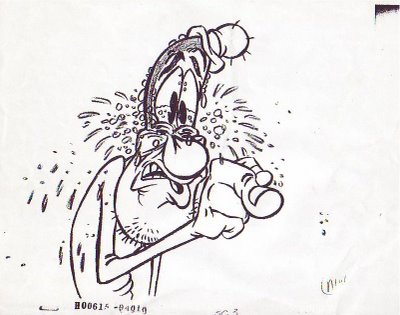I temporarily put down Mike Barrier's book on comics in order to finish two books that are due at the library this week. One is a sleazy but unintentionally funny womans novel called "Scandals," and the other is a scary non-fiction book about Putin's Russia called "Nothing Is True, Everything Is Possible."Here's (below) an excerpt from Scandals. See what you think.
It starts with a nice house in Brentwood (above). Mona's husband is away on a business trip and she's invited her husband's young protege Peter Hamilton over for cocktails. It reads....
Absently Mona put the Perrier it her lips, swallowed and took a deep drag off the pall Mall. "You know, Peter, if it weren't for my bosom I think Jack would just walk out without saying 'Boo!' "
"No. Do you really think so?"
"Just ring that bell on the table, and I'll show you what I'm going to do to Mr. Jack Logan before we're finished."
Peter lifted the bell. Crystal chimes pealed and Wang hurried into the room.
"Wang," Mona commanded, "I want you to do your trick. Your trick, please, Wang...for Mr. Hamilton."
Wang hissed and bowed. He whirled back into the kitchen then reappeared carrying a long two-by-four. He put the piece of wood over a gap in the fireplace , nonchalantly stepped back, and then attacked.
Loosing a wild streak, Wang jumped forward and swung the heel of his hand in an arc. When hand met wood, the latter splintered, the two ends flying up in the air.
"Whew!" Peter said, "some trick."
"Wang," Mona said, clucking delightedly, "that was marvelous. Thank you ever so much. You see?" she asked Peter.
"But seriously," Peter said, "you'd never use that weapon on Jack Logan, would you?"
"I might. Peter, come in the pool."
He shook his head. "I should hit the road, Mona."
"Peter, you've got nothing to do. Come on in the pool. You look all hot and bothered." She winked at him. "It's me, I know. I give off a sexual discharge." Her nose twitched. "Electrical, I mean."
He could not disagree. Mona, possibly excited by Wang's show of force, had become a nimbus, prepared to swallow the whole world of men.
........................
Wow! Mona became a "nimbus," whatever that is. And the names...MOANa, Peter, Wang...I can't believe the writer did that. And the Mona character actually retains a salaried tough guy to keep her husband in line. Unbelievable! Someone should do a book about what housewives were reading in this period!
Hmmmmm....it looks like I don't have room to talk about the Russian book. Oh, well...next time!




































